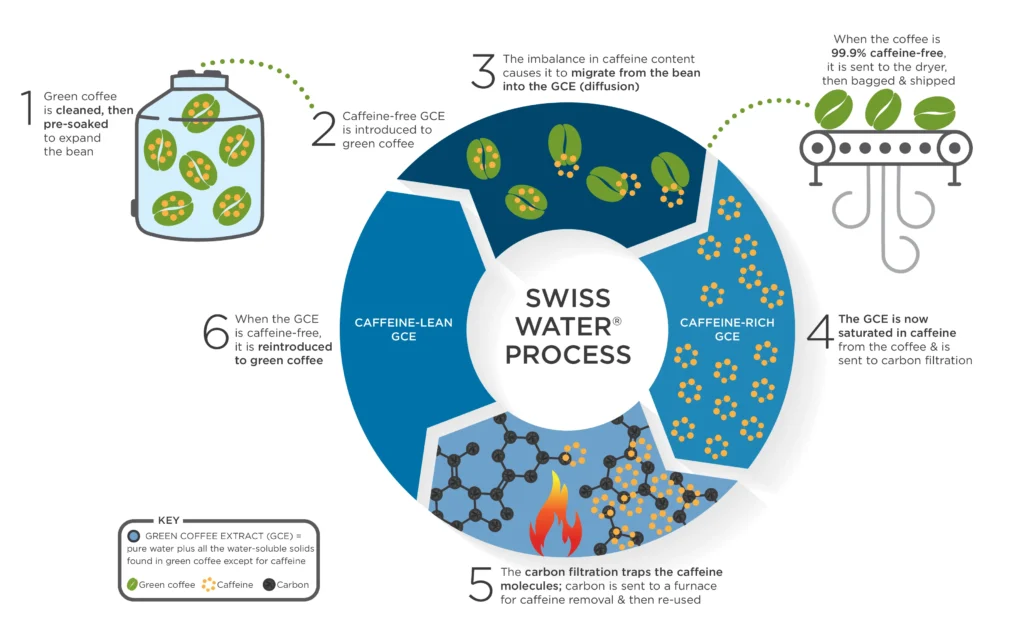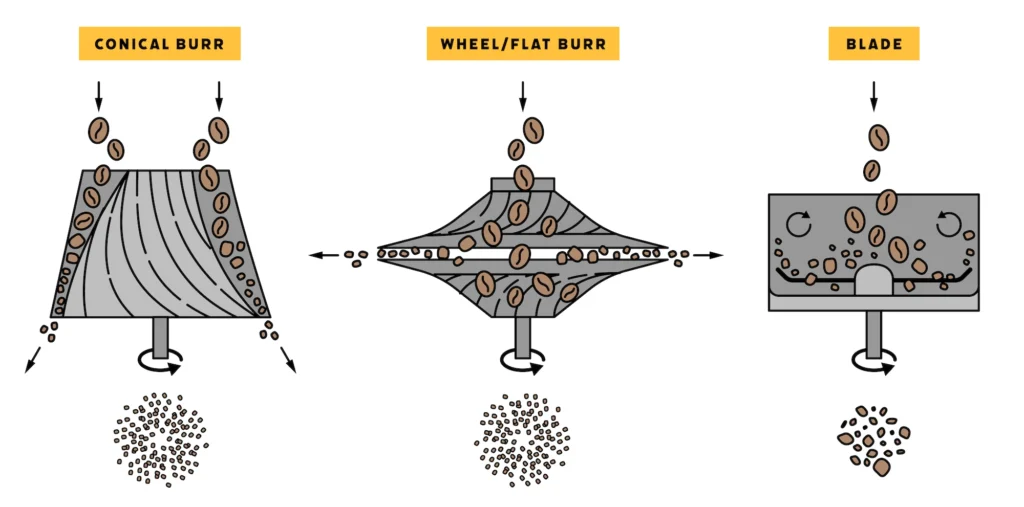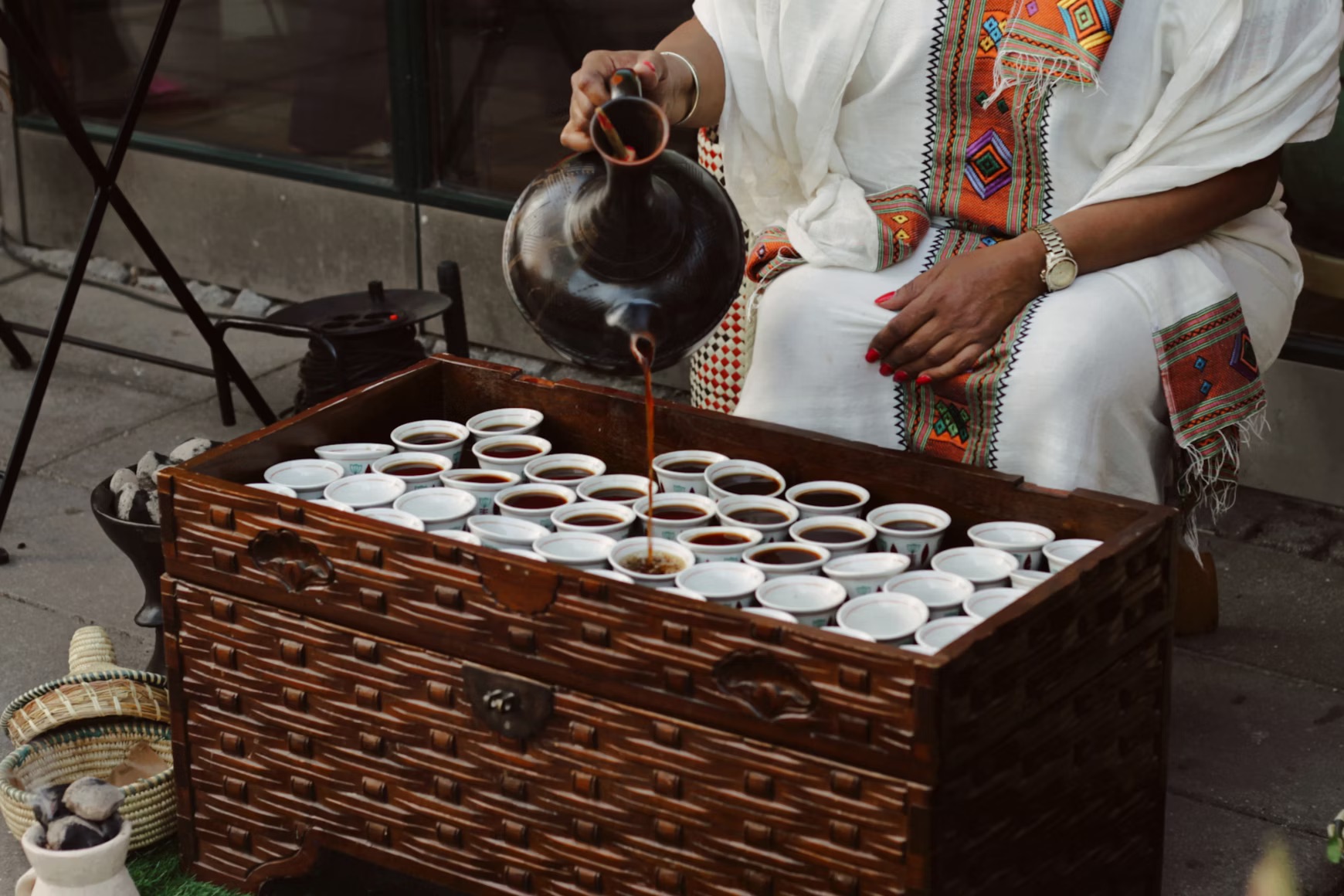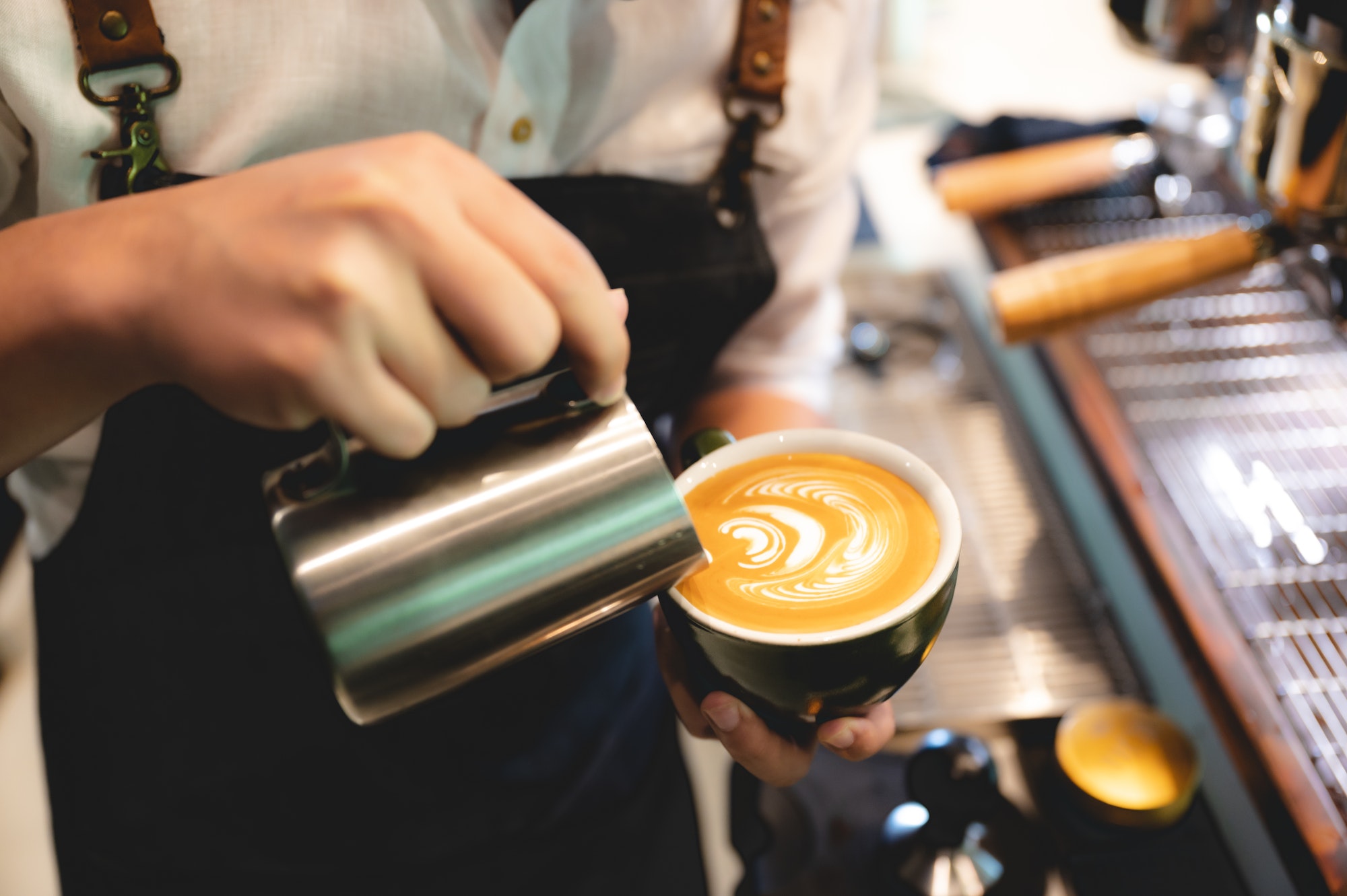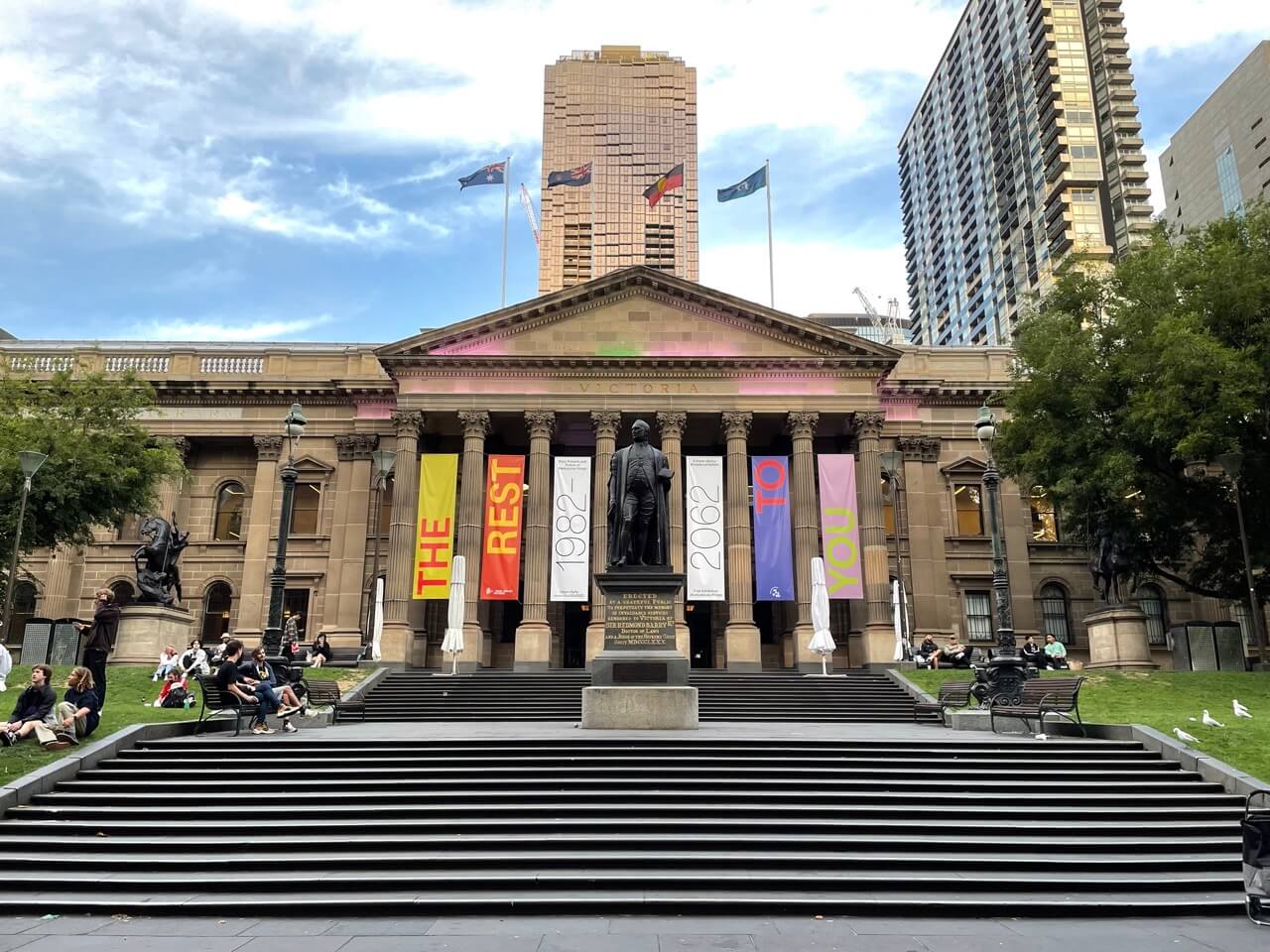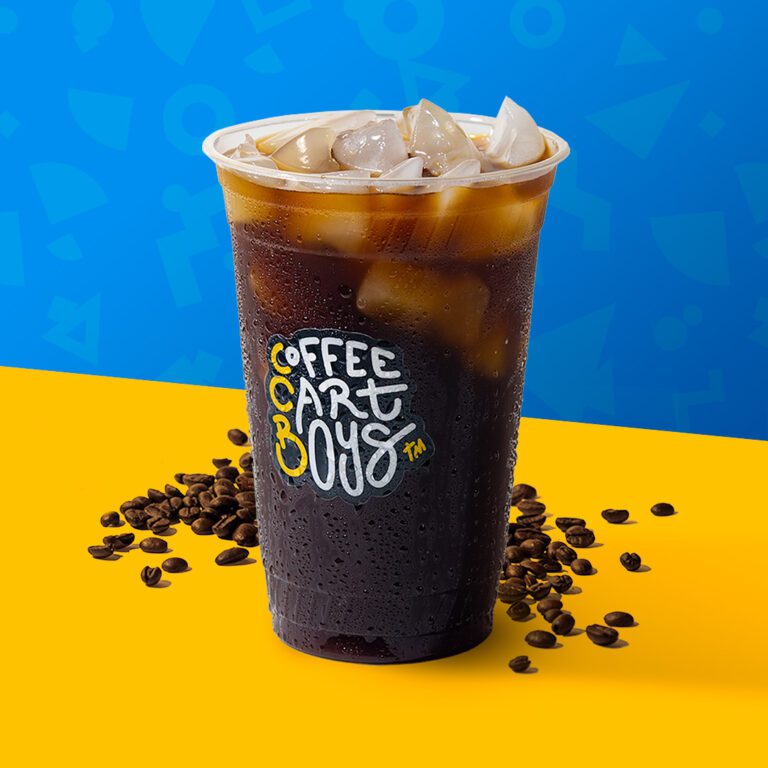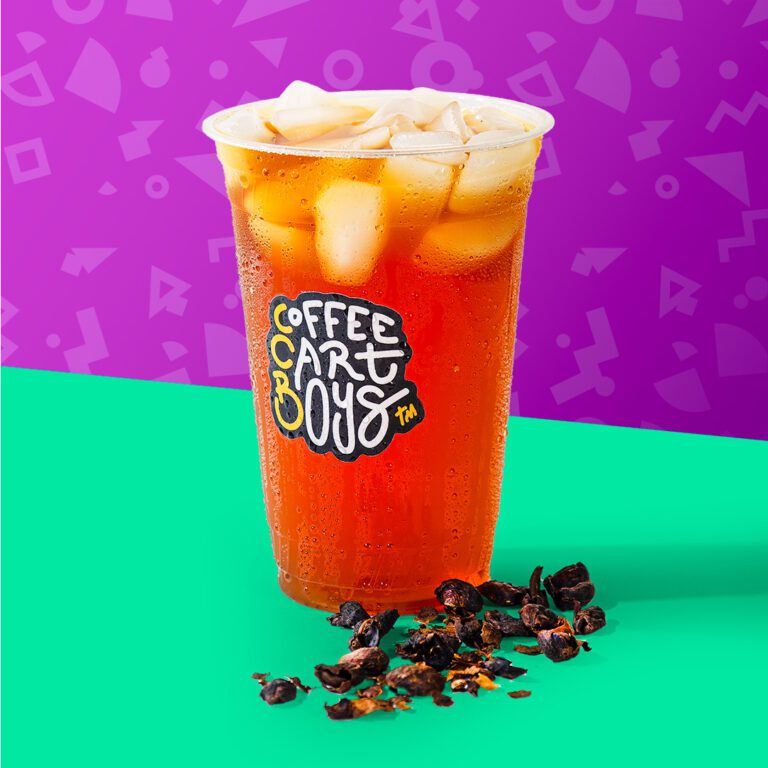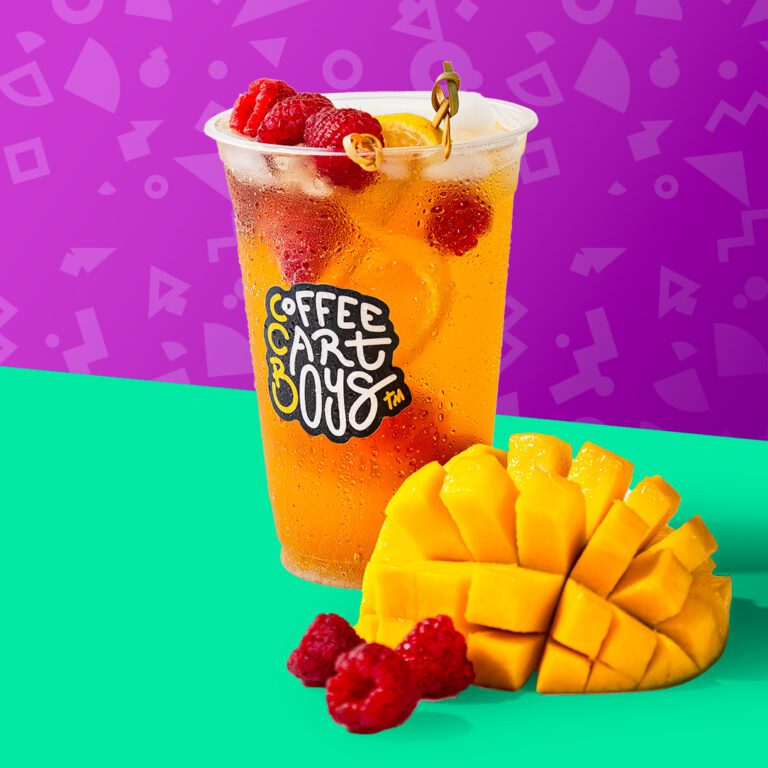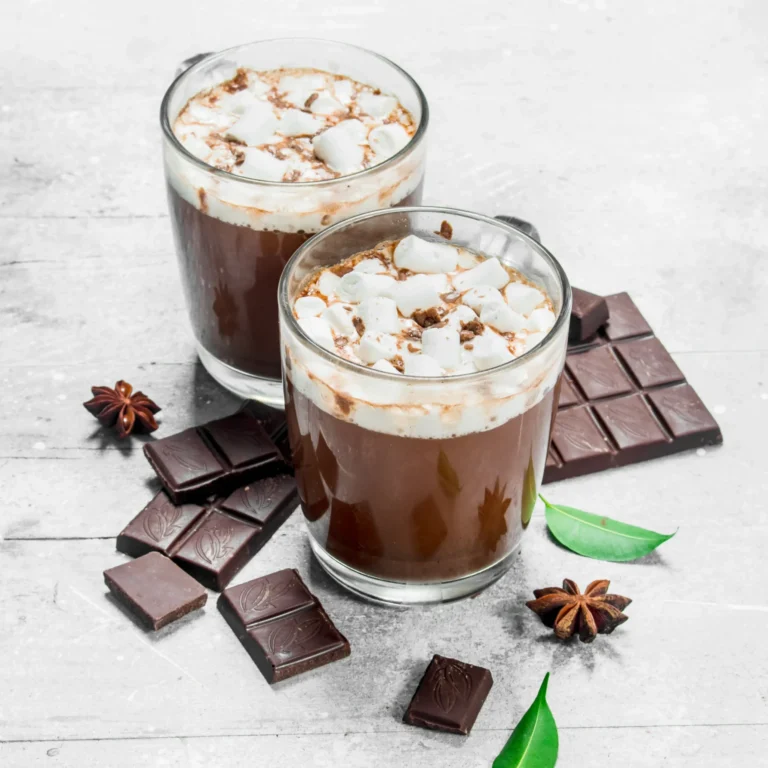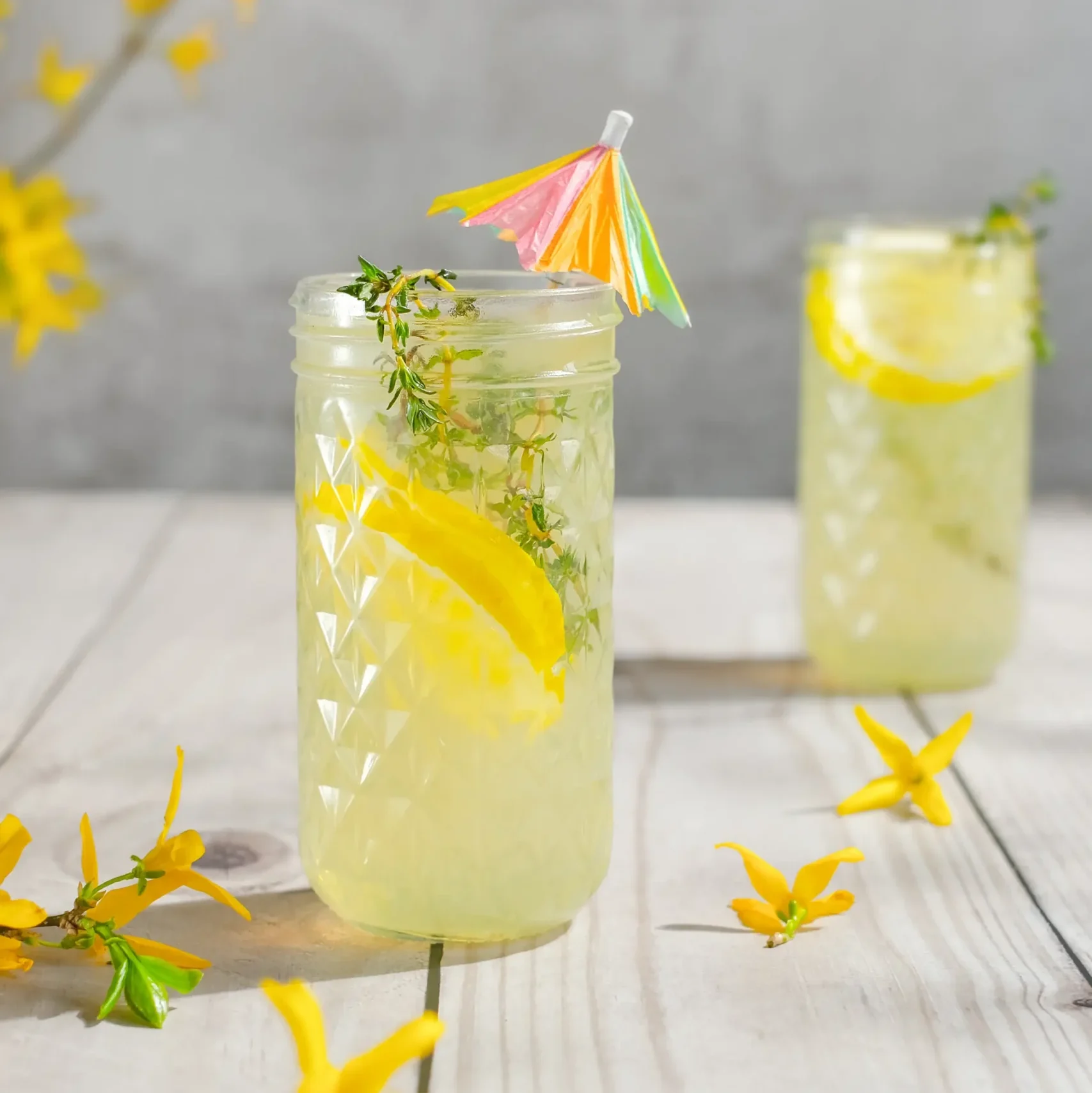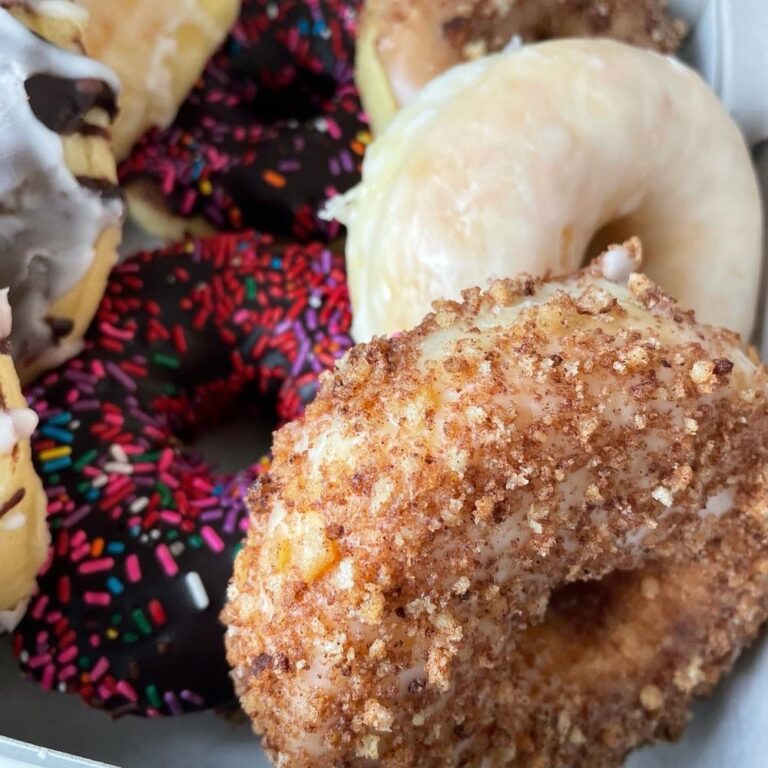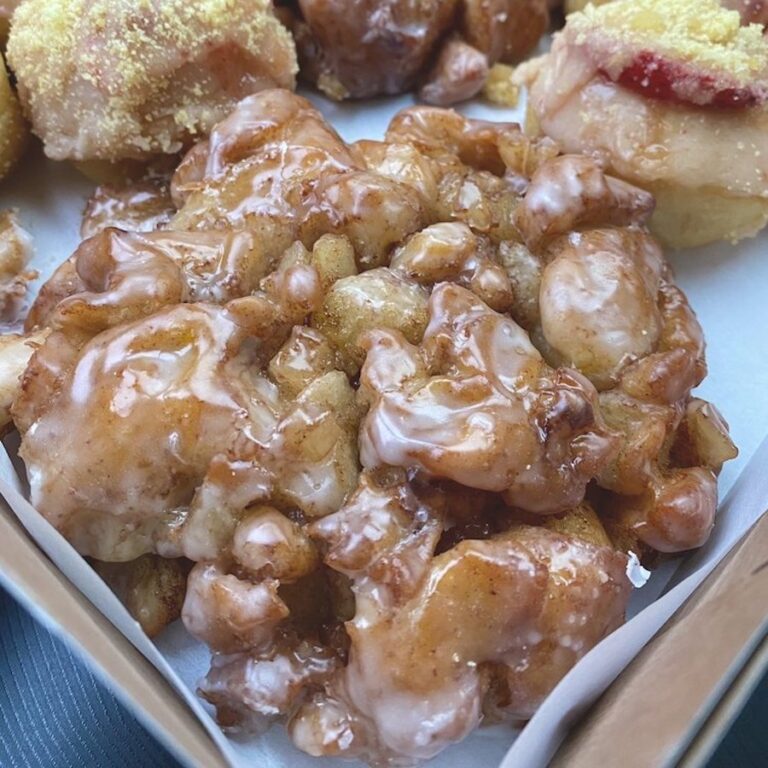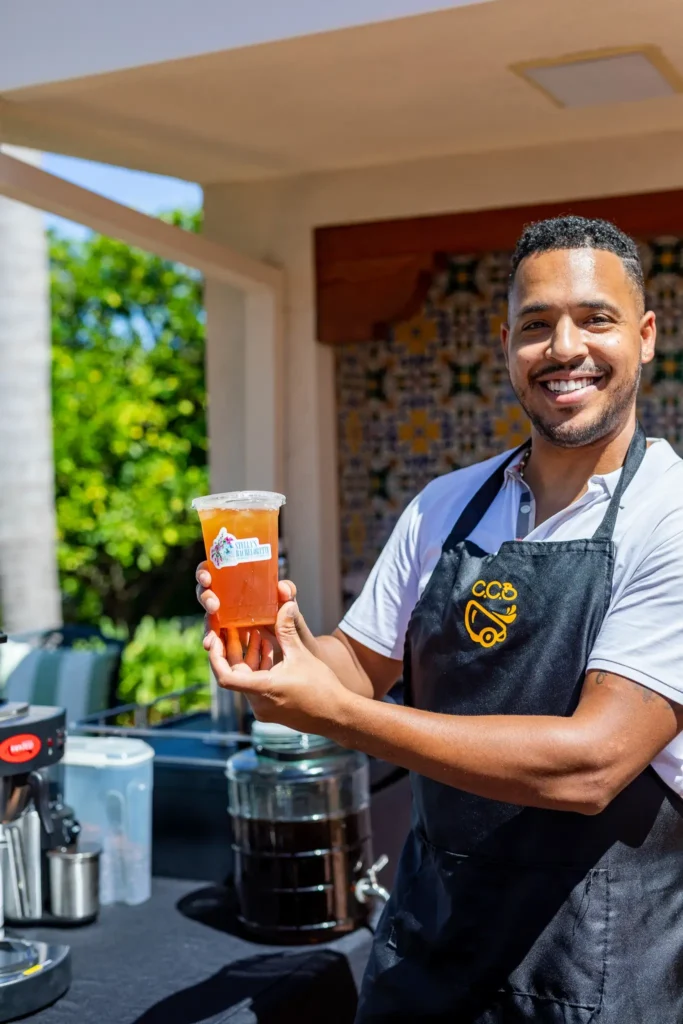My friend, let me tell you: you’re not alone in your confusion.

Understanding coffee terms and getting out of your coffee comfort zone can be daunting, but if you’re at all interested in going beyond a drive-through brew, it can be the difference between a mediocre or magnificent morning, between chaos or clarity.
As a self-proclaimed coffee nerd, I’m about to take you on a beginner’s crash course to teach you:
- Different coffee terms for drink styles, processing methods, roasts, and more, so you know how to buy the right bagged coffee beans and what to order at a cafe.
- A bit of coffee history that will make you appreciate your morning ritual a whole lot more.
- Coffee vocabulary that will impress people at parties or on dates.
Who was this article written for?
Coffee Rookies
You’ve only known the sweet embrace of a drive-thru latte, the convenience of an automatic brew machine, or the indulgence of a blended frappé.
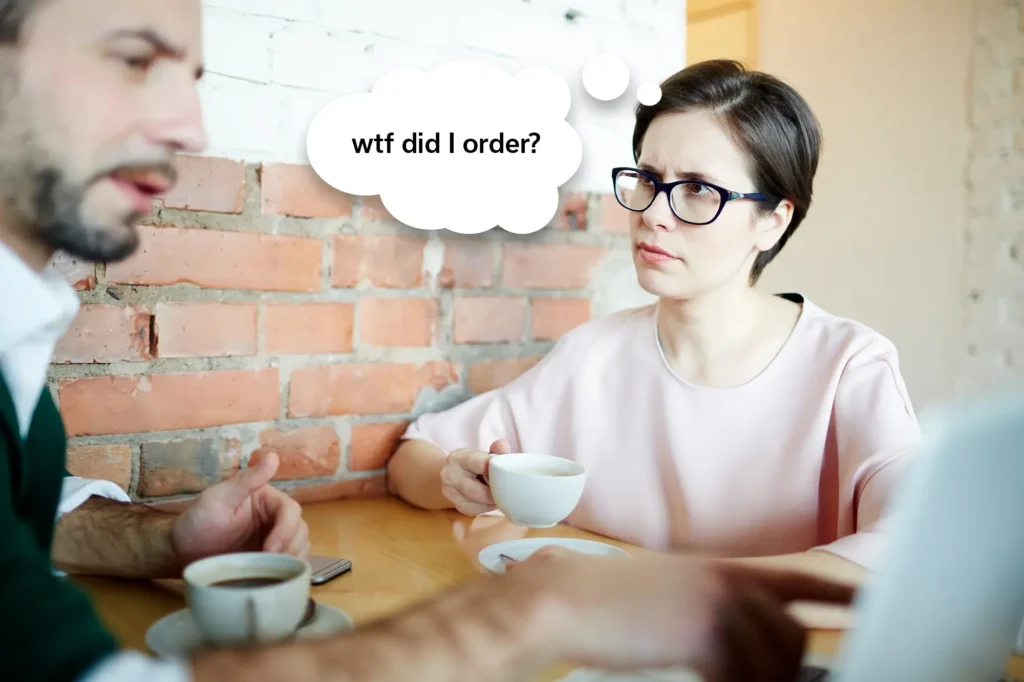
While we believe there’s no shame in that, I know that you know there’s a whole world of flavor to be discovered that you’re currently missing out on…
Like amazing, small niche coffee shops or online coffee retailers (like ours) focused on providing quality.
So, in this article, I’m going to dive relatively deep into the not-so-intimidating coffee scene and show you the ropes.
Now, shall we get started?
Brewed Coffee Drinks – Decoding the Lingo
Americano
The Americano is a bold coffee beverage made by combining 1-2 shots of espresso with hot water. It has a rich, robust flavor and the Americano’s origin story is believed to date back to World War II.
American soldiers stationed in Italy found the local espresso too strong and asked for something similar to drip coffee. Italian baristas added hot water to dilute the espresso, and the Americano was born.
However, its perceived bitterness is considerably more present than a drip coffee.
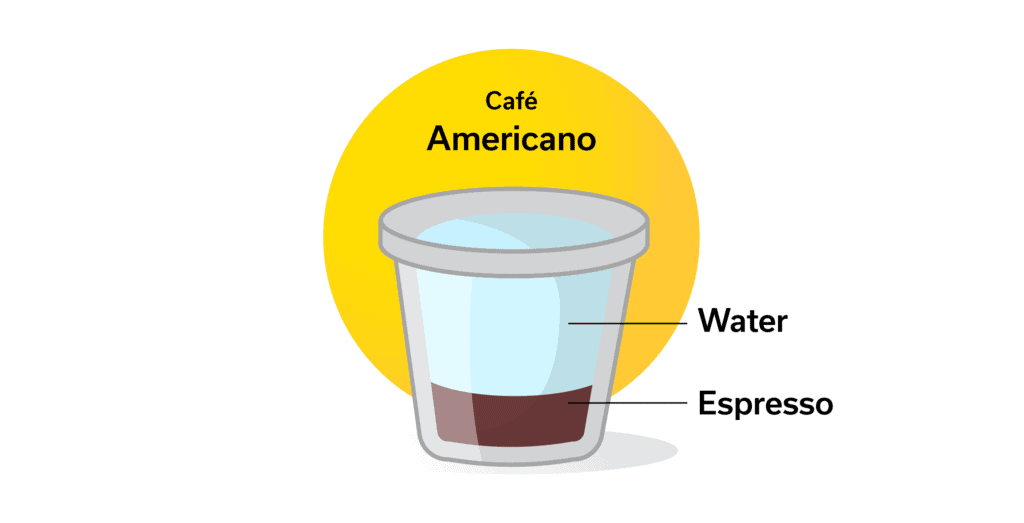
Batch Brew (Filter Coffee)
Batch brew coffee is an automatic percolation drip method seen in diners and convenience stores, where hot water trickles over coffee grounds in a filter-lined basket.
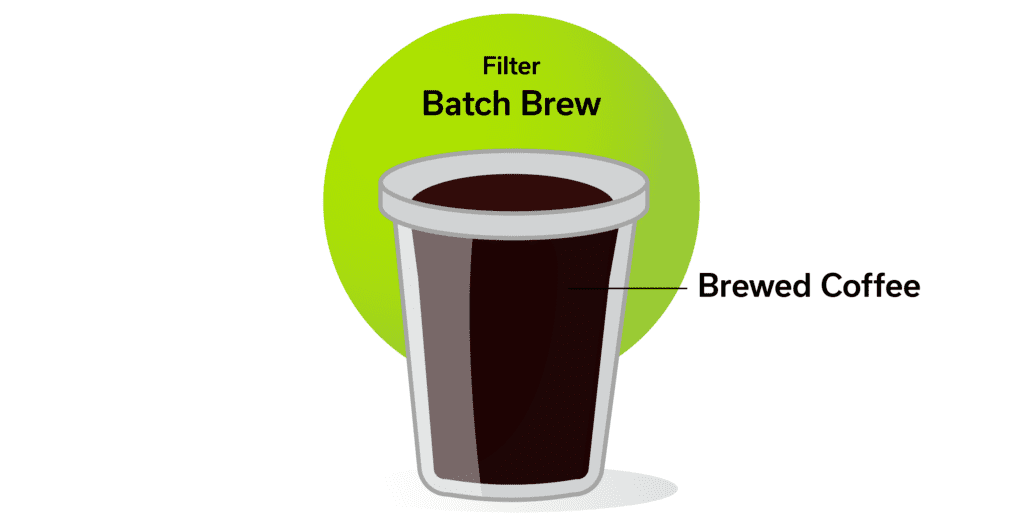
While not as refined as espresso, this method creates a milder, smoother, and weaker cup of coffee. The simple design and effortless process have made it a go-to in many fast-service coffee businesses.
Unfortunately, it has earned a poor reputation for quality, which is often due to the use of inexpensive coffee, hard water, and poor brewing techniques.
If done correctly, batch brews can actually be very tasty.
Black Coffee
Black coffee has no milk, and no sugar – made with just the coffee grounds and hot water.
I used to hate plain, black coffee…
But then I discovered that despite its reputation and common misconceptions, you’re not getting punched in the face by bitterness and it’s not nearly as tasteless as what a Keurig makes.

It’s more like a symphony for your senses – the aroma, the acidity, the body – all working together to create a harmonious and complex flavor profile.
A well-brewed black cup of coffee is the purist’s drink of choice and a bold statement, and the reward can be an exquisite sensory experience that can greatly enhance anyone’s morning ritual.
Of course, the quality of the beans and the brewing method can make all the difference.
When done right, a perfect cup of black coffee can make you feel like a winner, not like you got a black eye after going one round with Rocky “The Barista” Balboa.
Cappuccino
A cappuccino comprises three key ingredients each measured in equal parts: espresso, steamed milk, and foamed milk.

This coffee drink that is near and dear to many coffee lovers’ hearts, was made a classic by 20th-century Italians after the espresso machine was invented, but the cappuccino is known to be an original invention of 18th-century Austrians who made it using standard, non-espresso coffee mixed with whipped cream and sugar.
Café au Lait
A cafe au lait is a delightful French take on the classic café latte, with two key differences that make it stand out:
While a latte is made with espresso as its base, a cafe au lait traditionally uses drip or French press coffee for a mellower, less intense flavor.
Additionally, a cafe au lait is made with steamed milk, giving it a rich, creamy texture that complements the coffee perfectly.
In contrast, a latte uses both steamed milk and frothed milk, resulting in a more frothy, layered, and larger serving.
Cold Brew Coffee
Cold brew coffee is a method of brewing coffee using cold water, resulting in a smoother and less acidic taste compared to traditional hot brewed coffee.
The process of making cold brewed coffee involves steeping coffee grounds in cold water for up to 24 hours (32 in some cases), to extract the flavor compounds without the use of heat.
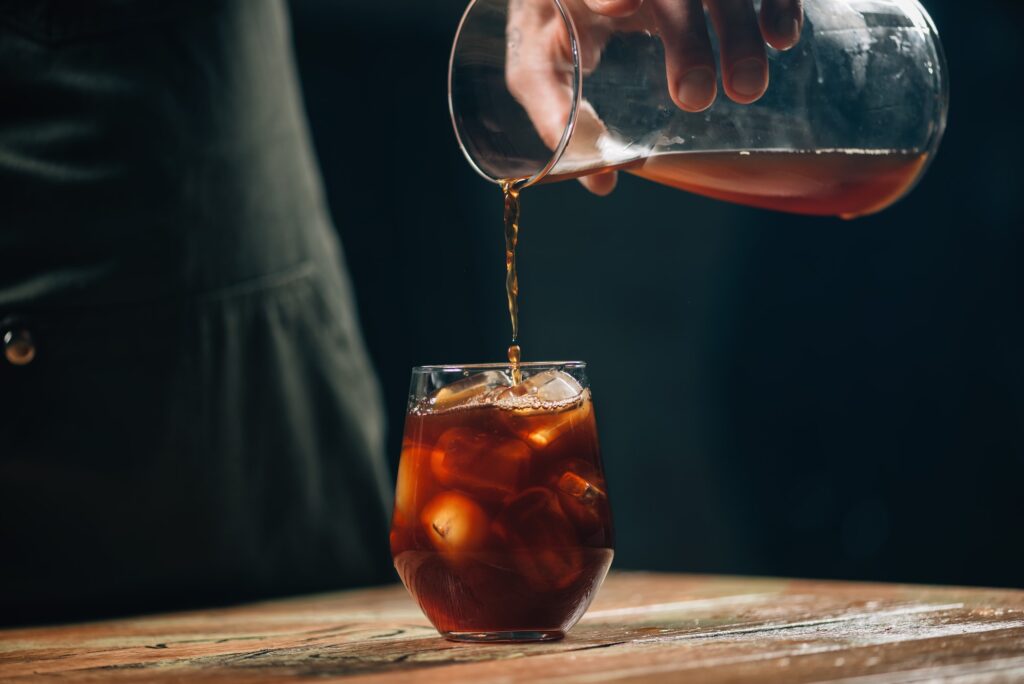
It can also be served as a concentrate, which can be diluted with water, milk, or other liquids depending on the desired strength and flavor profile. Cold brew coffee can be made at home using a variety of methods, from simple mason jars to inexpensive, specialized cold brew systems.
Cold brew coffee can also be dispensed from kegs in a kegerator to create, nitro cold brew, which is simply cold brew coffee lightly carbonated using nitrogen gas. This very safe-to-drink beverage is smooth and creamy, with the texture being similar to a stout (a la Guinness) or porter beer.
Cortado
A cortado (or cortadito in Latin-American Spanish) is a delicious espresso drink that surprisingly has Spanish, not Italian origins.
Traditionally around 60ml (2 ounces), this brewed coffee drink is made with a double shot of espresso, and an equal amount of steamed milk, and is then served in a small glass with latte art.
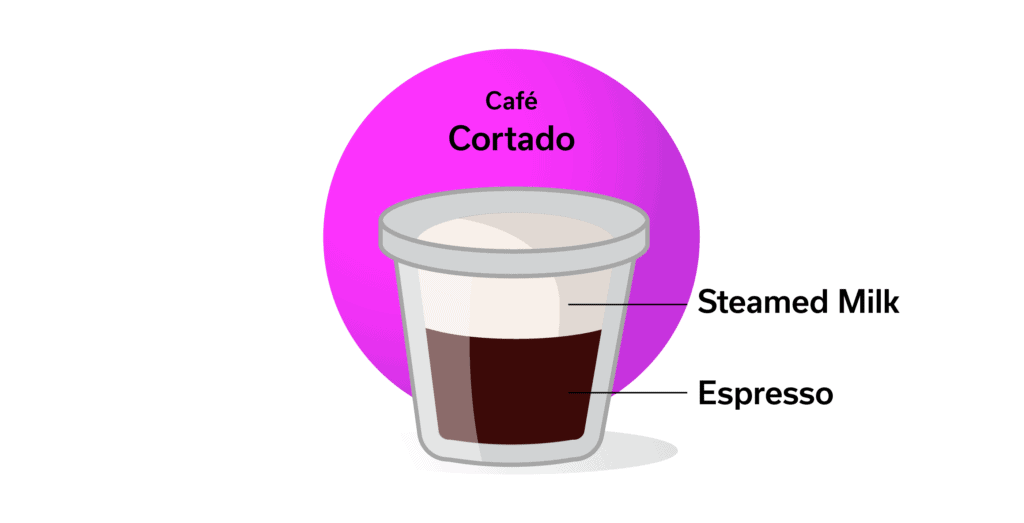
With a ratio of 1 part coffee to 1 part milk, the cortado is a milder, more approachable espresso drink compared to a black shot that still packs a flavorful punch.
A cortado is a great way to explore the flavors of a coffee shop’s espresso without going all in on an intense black shot.
So next time you’re looking for a new espresso drink to try, I personally recommend a cortado or piccolo, so you can experience the true taste of the espresso tamed with smooth and creamy plain dairy or non-dairy milk.
Doppio
Doppio is an Italian term that is used to describe a double shot of espresso. It is made by extracting two standard shots of espresso (about 60ml or 2 ounces) from a single dose of coffee.
The double shot of espresso provides a less intense coffee flavor, making it a popular choice for those who prefer a slightly weaker coffee taste compared to a single shot or ristretto.
However, this does come at a cost to taste: the longer the brew time, or extraction, for a single dose, the more bitter the shot becomes.
Drip Coffee (Filter Coffee)
Drip coffee is a method of brewing coffee that involves pouring hot water over ground coffee that are held in a paper or metal filter.
The hot water drips slowly through the filter, extracting the coffee flavor as it passes through the grounds. The resulting brewed coffee is collected in a carafe or mug.
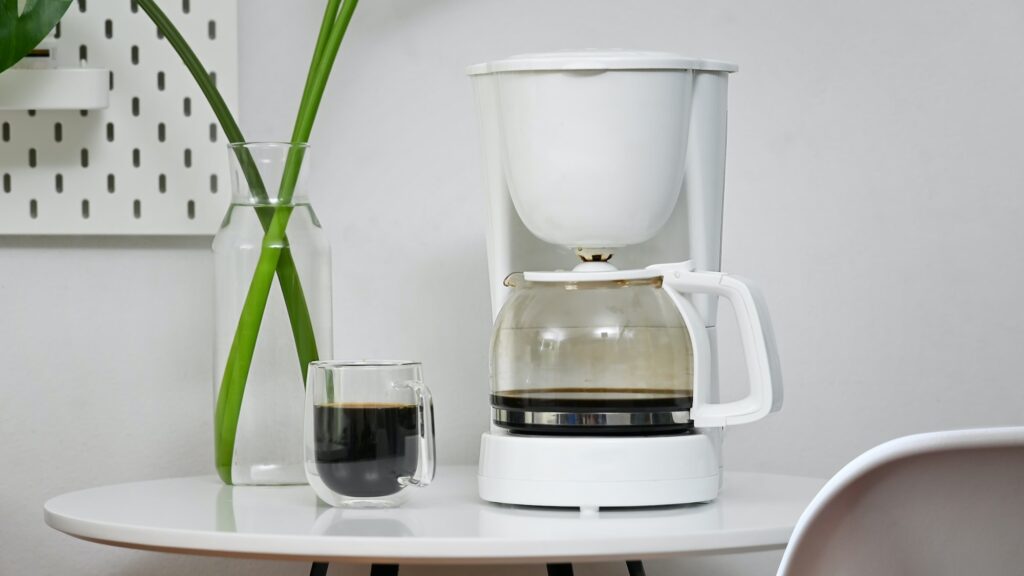
Drip coffee is a popular brewing method in many households, and its high-yield counterpart known as The Batch Brew is commonly served in restaurants and cafes.
Decaffeinated Coffee
Decaffeinated coffee is a type of coffee that has had most of its caffeine removed, and must be between 97 and 99.9 percent caffeine-free to legally be called decaf.
There are different methods for removing caffeine, including the use of steam, natural solvents, the solvent-free “Swiss Water Process”, and others. While decaf coffee is not completely caffeine-free, it typically has much less caffeine than regular coffee.
For example, ours is decaffeinated using the Swiss Water Process:
It’s important to note that decaf coffee can have a slightly different taste than regular coffee due to the removal of caffeine.
Want to try some amazing specialty decaf? Check out our medium roast, Swiss Water Decaf coffee here.
Espresso (Shot of Espresso or Espresso Shot)
Espresso is an Italian invention and style of brewing very concentrated coffee that packs a bold and intense flavor using roughly 18 grams of coffee, hot water, and high pressure to produce a serving size (or shot) of about 28-35ml (approximately one fluid ounce).
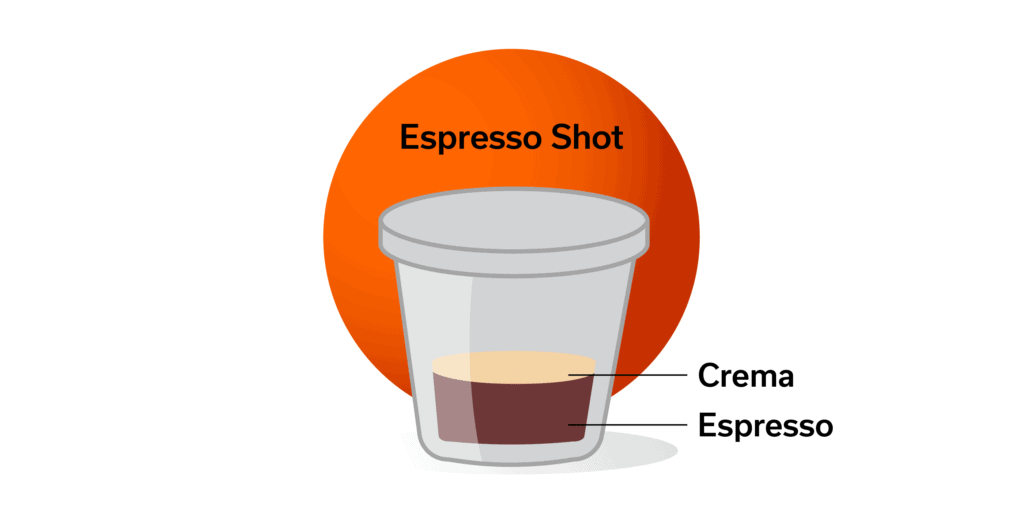
To create this potent beverage, hot water is forced through finely-ground coffee beans at high pressure, producing a liquid that is stronger and more acidic than a standard batch or drip coffee.
The texture is not as thick as honey or molasses, but it’s silky and creamy more similar to that of a hot chocolate. If consumed black, espresso is best drunk immediately after it’s brewed because a cooler change in temperature will change the taste and texture for the worse.
Almost always, there will be a bit of crema at the top of the shot, which is a light caramel colored foam caused by the Co2 gas released from the coffee grounds. This is also the most bitter part of the shot.
Flat White
The flat white is a popular coffee drink that is said to have originated in Australia in the 1980s, but there is some debate over whether it was invented there or in New Zealand.
It consists of espresso topped with a layer of velvety microfoam, which is less frothy than the foam on Italian espresso drinks like the cappuccino.
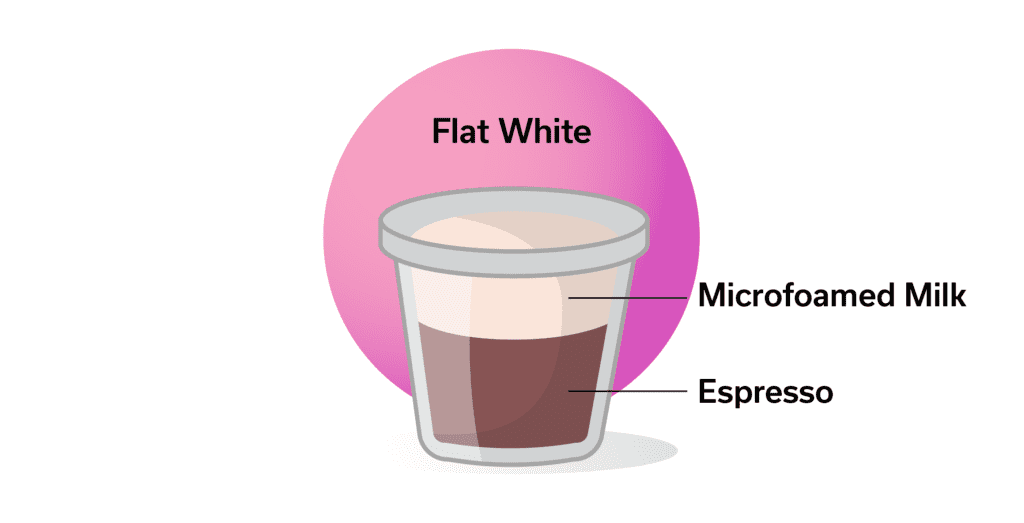
The flat white is typically served in a small ceramic cup, and its proportions of warm milk and espresso are similar to a cappuccino but with less milk. The result is a rich, velvety mouthfeel that has become very popular in specialty coffee shops around the world.
Iced Coffee
Iced coffee is made by brewing coffee, typically using hot water, and then chilling the coffee by pouring it over ice. A very popular method of making coffee this way is the flash brew style originated by The Japanese, which uses the pour-over as its brewing vehicle.
While this style can be made using various brewing methods such as batch brew or pour-over, it is not to be confused with cold brew coffee, which is made by steeping ground coffee in cold or room-temperature water for an extended period of time. Nor is it considered the same as frappuccinos, which are blended coffee drinks with ice and various sweeteners and flavorings.
Overall, iced coffee is a classic and refreshing coffee drink that can be enjoyed in various forms, whether it be black or with milk and sugar.
Instant Coffee
Instant coffee is a type of coffee that is made by extracting coffee from beans and then drying it into a powder or crystals that can be reconstituted into a cup of coffee with the addition of hot water or milk.
Instant coffee is usually made with a blend of Robusta and Arabica beans (unless labeled “100% Arabica”). This is because Robusta has proven to be a much more stable, resilient, and profitable species compared to Arabica.
However, the convenience and low price of instant coffee come at a cost of quality and flavor. Robusta is widely known to produce a more bitter flavor profile compared to Arabica, and when roasted is very harsh on the palate, explaining why instant coffees are infused with flavorings or are used as a base in very sweet coffee-flavored drinks.
Instant coffee is making a comeback in at-home coffee drinkers’ kitchens with drinks like The Dalgona Coffee.
Latte (Café Latte)
A double shot of espresso and steamed milk, with a generous amount of milk foam on top. The coffee flavor is mild and the milk provides a smooth and creamy texture. The total drink contains about 1 part coffee and 3 parts milk.
The latte has a rich history that can be traced back to the 17th century. European coffee houses have been serving coffee and milk together since then, and it has become a popular breakfast beverage in many countries across the continent.
The birthplace of the latte as we know it is Italy, and it is believed to have originated there due to the inclusion of espresso, which was an Italian invention. However, before espresso came along, the latte’s primitive form (standard brewed coffee with milk) has been enjoyed throughout mainland Europe and Britain for many years.
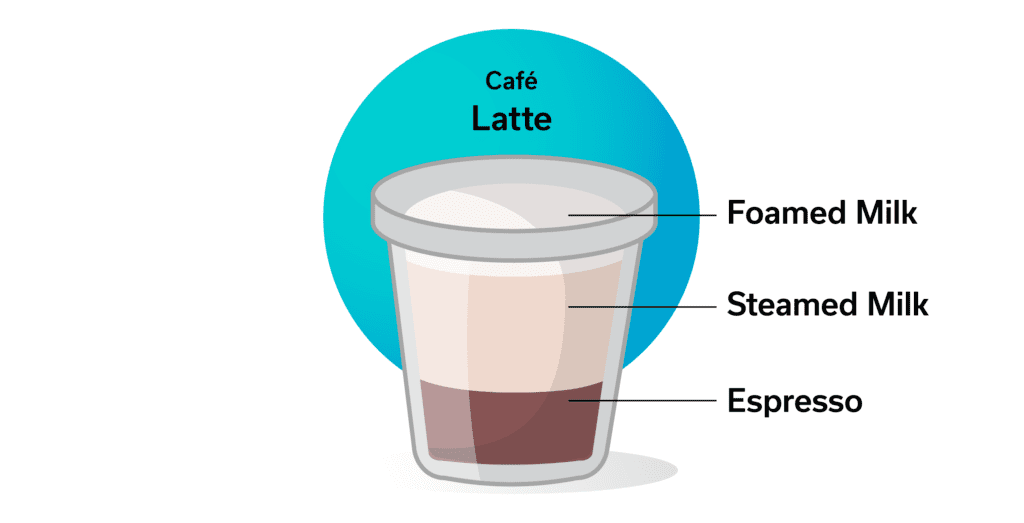
Long Black & Short Black
A long black is an Australian term for the classic americano: a double shot of espresso over hot water to create a less intense drink. A short black, however, is just a single shot over hot water.
Lungo
A lungo is a type of espresso shot that is brewed with a longer extraction time than a regular espresso, resulting in a larger and more diluted serving.
While a regular espresso shot is made with about 1 ounce of water, a lungo is brewed with the same amount of coffee but with more water, resulting in a shot that can be up to 4 ounces in size.
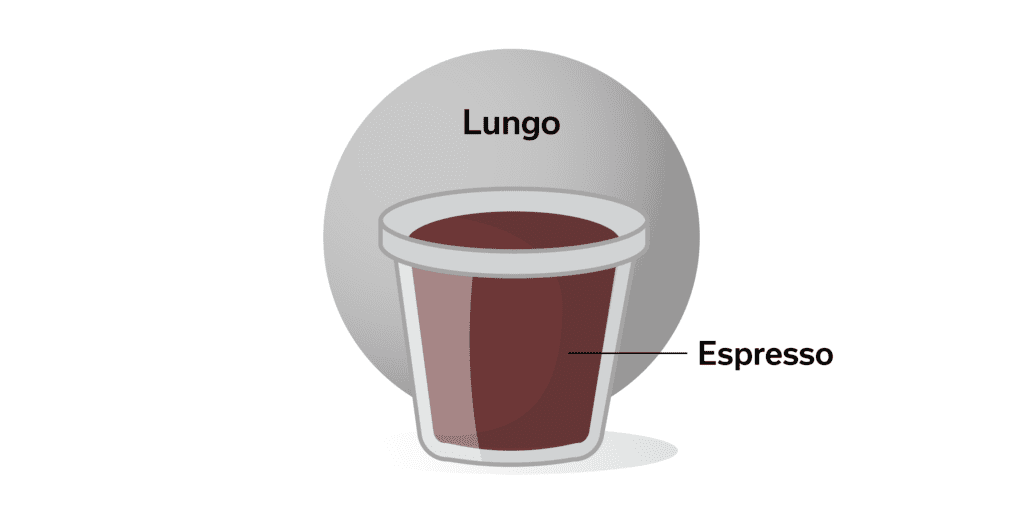
This longer brewing time can cause the shot to be over-extracted, resulting in a more bitter taste. While some coffee drinkers enjoy the stronger, more concentrated taste of a traditional espresso shot, others prefer the milder, more diluted taste of a lungo.
However, it’s important to note that a lungo may not be suitable for all coffee beans or brewing methods, and it’s best to experiment to find the right balance for your personal taste preferences.
Personally, I haven’t tried a lungo before, but I don’t expect it to taste very good.
Macchiato
A macchiato is a popular espresso-based drink that originated in Italy. It is made with a shot of espresso and is often topped with a dollop of microfoamed milk, resulting in a drink that is about 95% black espresso. In some cases, a flavored syrup or sweetener may be added to the drink to give it a different taste.
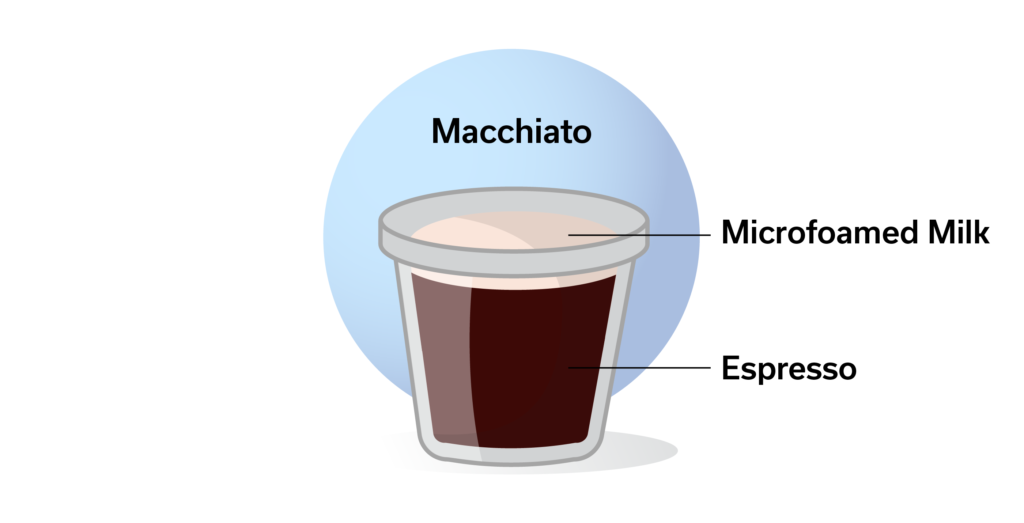
The name “macchiato” means “stained” or “marked” in Italian, and refers to the small amount of milk that is added to the espresso.
It’s believed that the name was created as a way for baristas to show waiters in Italy’s restaurants the difference between an espresso and an espresso with a dash of milk.
Piccolo (aka Piccolo Latte)
The piccolo is similar to a cortado, in that it’s a small drink and consists of espresso and steamed milk, which is popular in Australia (Melbourne has something similar they’ve created called a “magic” coffee) and New Zealand, but is lesser-known worldwide.
Despite its similarities to a cortado’s recipe of 1 part espresso to 1 part milk, the piccolo is essentially a miniature latte, with a ratio of about 1 part coffee and 2 parts milk.

The result is a small serving that’s creamier, sweeter, and less intense than a cortado, with an ideal serving size ranging between 85-114ml, or about 3-4oz.
Pour Over Coffee (Filter Coffee)
A pour over coffee is a simple, inexpensive manual brewing technique that has gained popularity among coffee enthusiasts and involves pouring hot water over ground coffee beans, which are held in a filter, usually made of paper or cloth. The water is then slowly poured over the coffee grounds using a gooseneck kettle and drips through the filter into a carafe or directly into a cup.
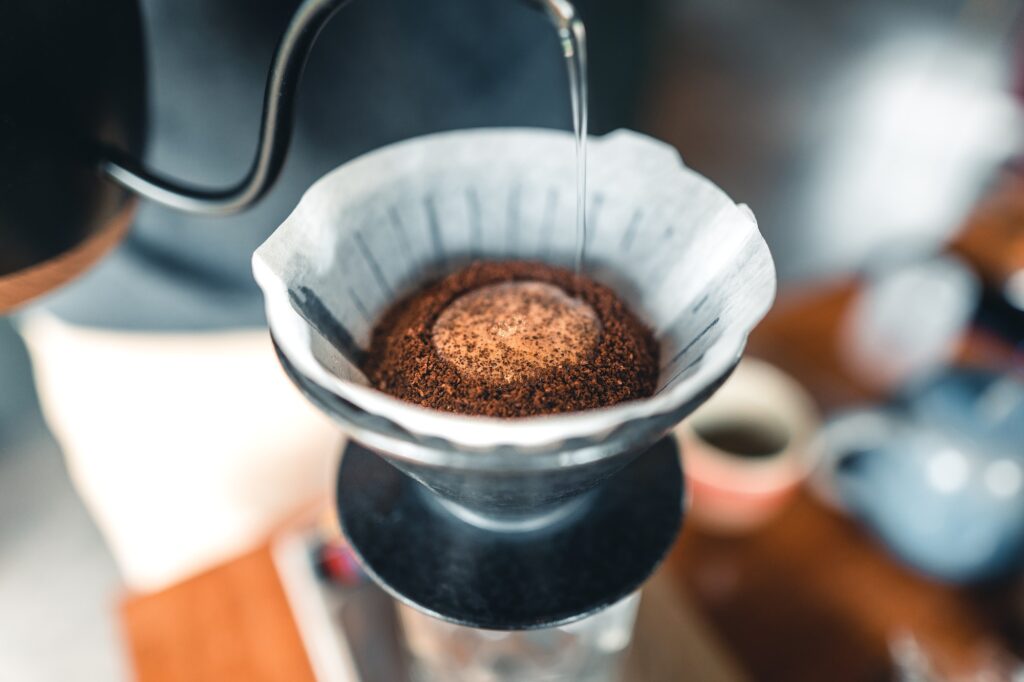
Compared to coffee made with a french press, this method results in a cleaner and thinner body because the filter removes the beans’ natural oils and fats. A french press coffee will allow those oils and fats to stay within the coffee, resulting in a thicker and silkier body.
Red Eye
A red eye coffee is a type of coffee drink that contains both drip coffee and a shot of espresso. A single shot of espresso is added to a cup of drip coffee to create a Red Eye, while two shots make a Black Eye, and three shots make a Dead Eye or Green Eye, depending on the location.
As you can safely assume, the name Red Eye was said to have been coined after the extra caffeine needed to stay awake through an overnight red-eye flight from the West Coast to New York and vice versa.
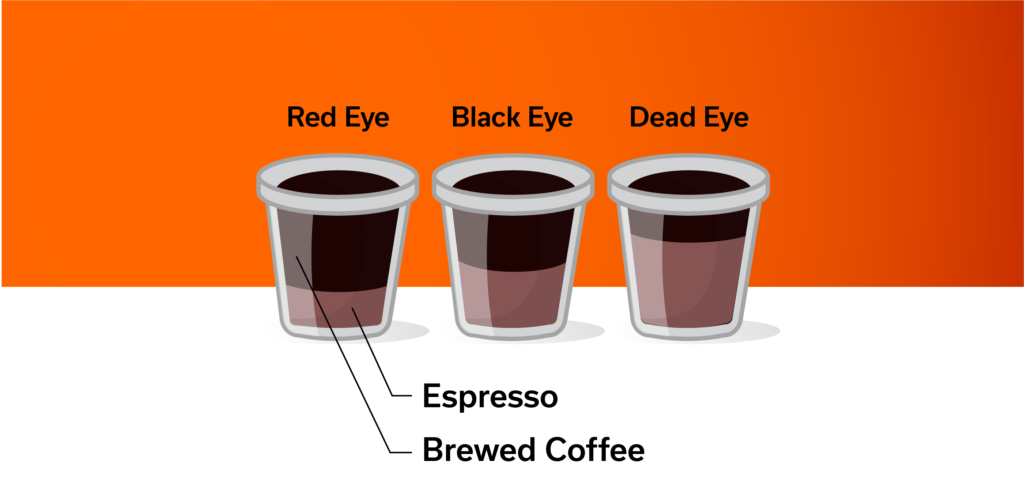
Ristretto
A shot of espresso made with less water, that results in a more acidic, but sweeter flavor.
It’s also brewed with the same amount of coffee, but the shot’s final volume is less than a regular shot due to its extraction time being shorter. This also eliminates the crema a standard shot has, which is the most bitter part of an espresso shot.
This results in a weight of 20ml compared to a standard espresso shot’s weight of 30ml.
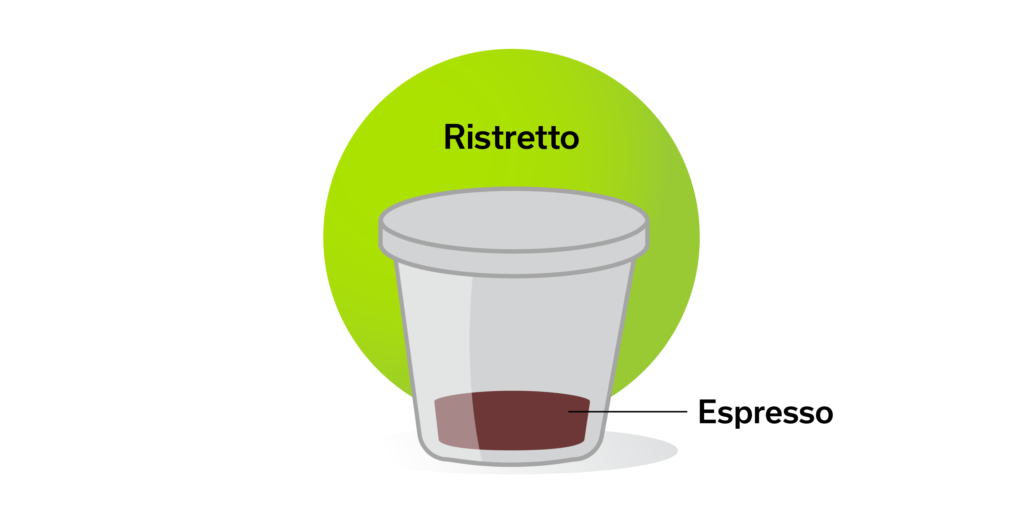
Non-Beverage Terms You Need to Know
Blend
A coffee blend is a combination of usually up to 3-4 different beans from different origin regions, blended together to create a unique and distinct flavor profile.
It’s not just a simple mix of beans randomly curated – it’s a precise, calculated process that uses expensive technology and machines to dial in a flavor unique to that roaster’s level of creativity.
In some cases, a café’s blend(s) is/are a closely guarded secret and can be a key differentiator in likely a very competitive local coffee culture.
For instance, in Australia, many cafes have developed proprietary blends to stand out in the market and when I asked what’s in them, they understandably and politely refused to share with me specific percentages or even what origins make up their most prized blends.
To craft a unique and pleasant blend, a roaster must find the right balance of green, unroasted coffee beans. With a blend hypothesized, they will then trial and error their way through the roasting process to figure out what produces the best combination and taste in the final cup of coffee.
One of the final steps in developing a coffee blend—also single origins—is usually a “cupping”, which determines an overall quality score.
Coffee Beans
Coffee beans are grown in many different regions around the world, and the conditions in which they are grown can have a significant impact on their flavor and aroma. But did you know the coffee bean isn’t a bean at all?
A coffee bean is actually the seed of a stone fruit called the coffee cherry, which grows on coffea trees that aren’t very large; more akin to the size of a shrub or bush.
There are two main species (or types) of coffea: Arabica and Robusta.
Arabica
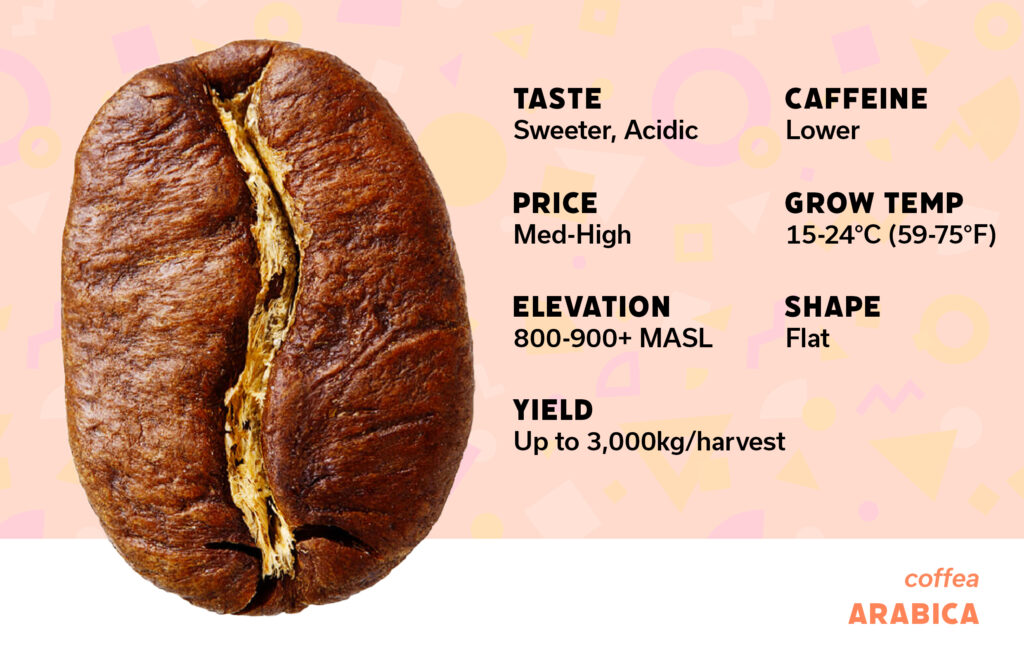
Arabica beans, scientifically known as Coffea arabica, are widely considered to be the gold standard, prized for their nuanced and delicate flavors that can be crafted into specialty blends by experienced growers and roasters.
However, these beans are also notoriously finicky and prone to disease and pests, and are grown at elevations of 900 meters (3,000 feet) or higher, which leads to increased costs of production.
Due to the uneven terrain of these growing regions, hand-picking of cherries is often necessary, adding to labor costs. Moreover, weather patterns at higher elevations can be more unpredictable, which makes it difficult to schedule picking times.
All of these factors contribute to the relatively high price of Arabica beans compared to their Robusta-based counterparts.
Robusta
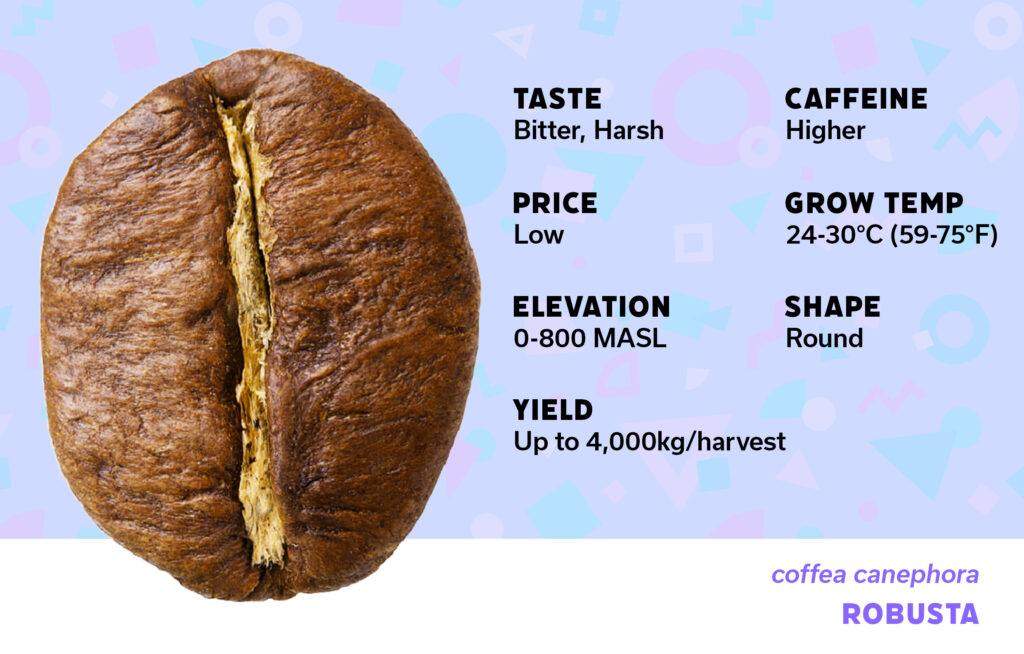
Robusta beans, scientifically known as Coffea canephora, are a hearty and adaptable species of coffee plant that can be cultivated at lower elevations, are more resistant to pests and diseases, and have a higher caffeine content compared to their Arabica counterparts.
For these reasons, commercial coffee brands often use Robusta beans in their blends despite their intensely harsh taste, with notes of ash and rubber that can be overwhelming and can produce an incredibly undesirable cup of coffee.
Coffee Cherry (Coffee Fruit)
Coffee cherries are stone fruits that contain a protective outer skin called parchment, very little fruit, and mucilage that surrounds the seed within.
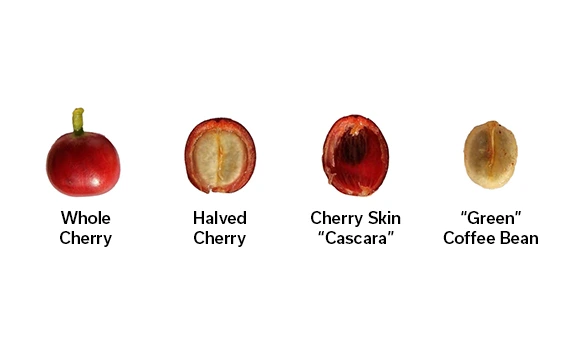
They grow on long branches of the coffee tree and start as flowers. The flowers develop into berries, and the berries turn from green to red or sometimes yellow.
Once the coffee bean (seed) is removed from the cherry, it’s then roasted to create the rich, complex flavors that are associated with specialty coffee.
A quickly evolving niche within the coffee industry is the consumption of cascara, which is a fruit tea made from the fruit and skin of coffee cherries.
Cupping
“Cupping” is a process used by coffee professionals to evaluate and compare different coffee varieties, roasts, and origins.
Cupping allows professionals to assess the coffee’s aroma, flavor, acidity, body, and aftertaste, and to identify any defects or inconsistencies in the coffee.
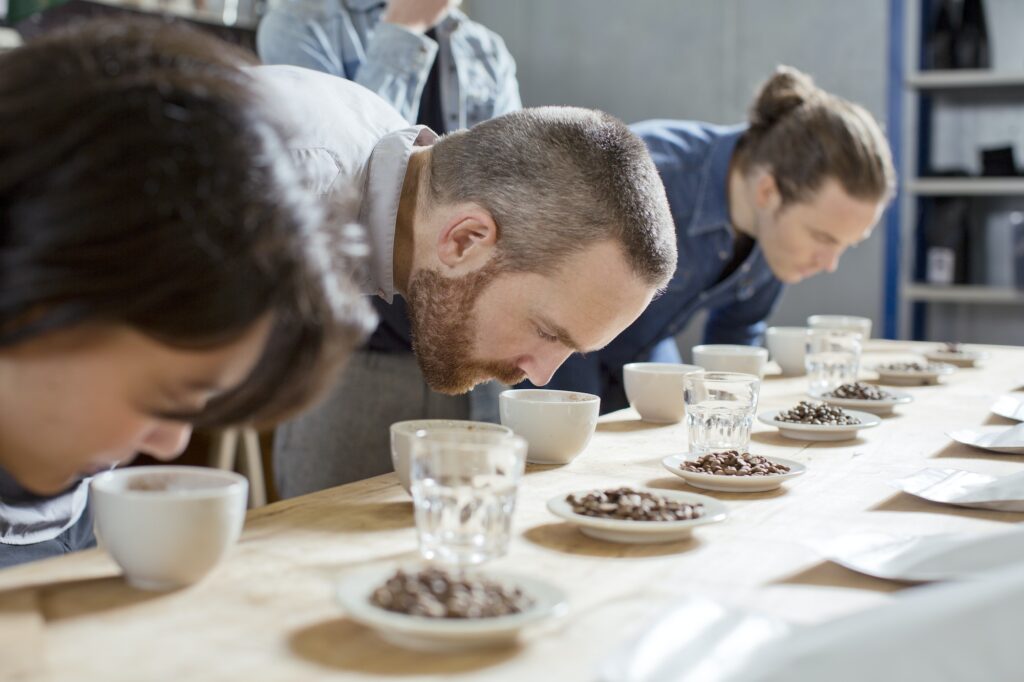
It involves grinding the coffee beans and steeping them in hot water for a set period of time before tasting and evaluating the coffee. The tasting process begins by breaking the crust and allowing the grounds to sink to the bottom of the cup.
From there, tasting is conducted by dipping a spoon into the surface of the coffee, then slurping it. The louder the better as slurping pulls air in with the coffee, allowing its unique flavor to be more present and detectable.
It is a highly subjective process and requires a trained palate and years of experience to become proficient. Cupping is a crucial step in the coffee production process as it allows producers, roasters, and buyers to ensure quality and consistency in the final product.
Demitasse
A demitasse is a small cup (about 60-90ml or 2-3 ounces), often made of ceramic, porcelain, or glass that is used to serve espresso and some espresso-based drinks like espresso shots, ristrettos, macchiatos, or cortados and piccolos.

The word “demitasse” comes from the French language and literally means “half-cup” in English. Demitasse cups typically hold between 60-90ml or about 2-3 ounces of liquid, which is roughly half the size of a cup used to serve flat whites and cappuccinos.
The smaller size of the demitasse cup allows the coffee to cool down more quickly so it can be consumed in small sips.
Extraction
In the context of brewing coffee regardless of its method, extraction refers to the process by which water dissolves and pulls the soluble compounds from ground coffee. The goal of proper extraction is to produce a flavorful, well-balanced cup of coffee that showcases the unique characteristics of the coffee beans being used.
During extraction, hot water is poured over the coffee grounds, and the water dissolves and extracts various compounds, including the coffee’s natural acids, fats, oils, sugars, and others.
The filter acts as a barrier between coffee grounds and your beverage, allowing only the solubles to pass through and bind to the water molecules, which creates brewed coffee.
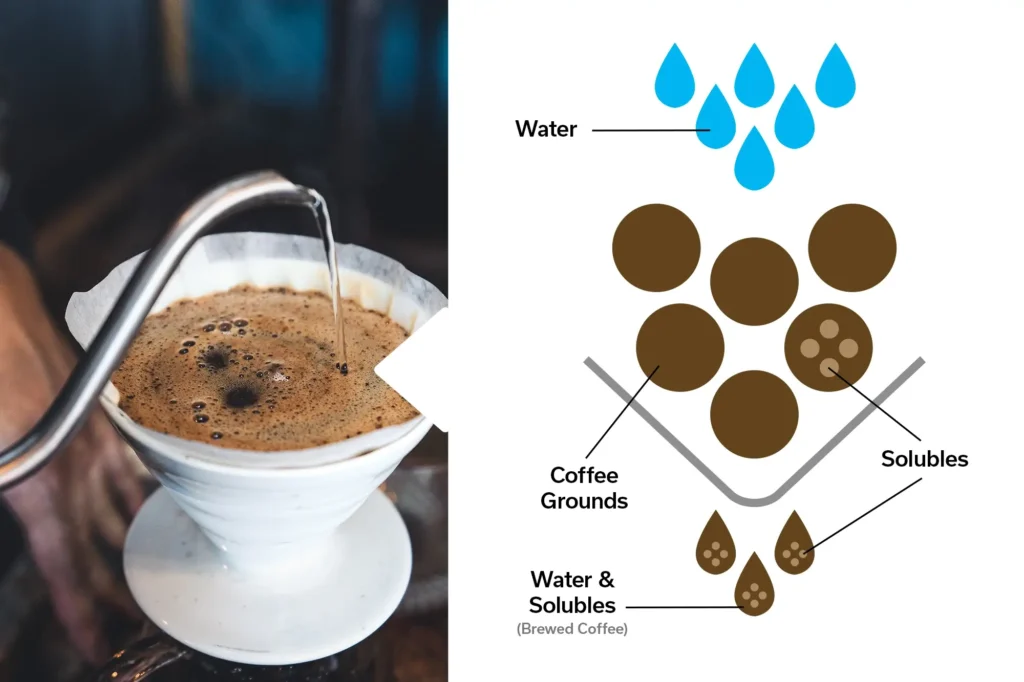
The amount of extraction that occurs is influenced by a number of factors, including the brewing method, the grind size of the coffee beans, the water temperature, the brew time, the filter type, and the coffee-to-water ratio.
If too little extraction occurs, the resulting coffee may taste weak, sour, or underdeveloped. If too much extraction occurs, the resulting coffee may taste bitter, astringent, or overdeveloped. Achieving the right level of extraction is key to producing a high-quality cup of coffee.
Fair Trade Coffee
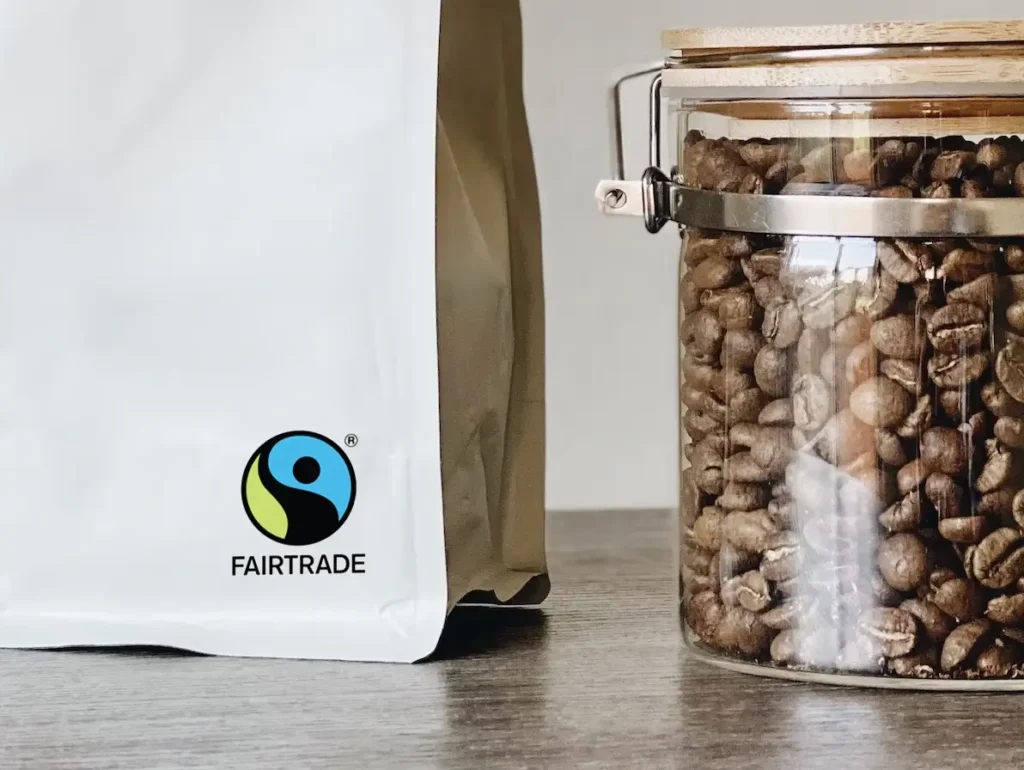
Fairtrade International is an organization and certification program that ensures coffee is produced and traded under transparent and fair conditions, empowering producers and promoting sustainable agriculture.
Fairtrade impacts coffee farmers and their families by providing a reliable source of income, improving working conditions, and promoting environmental sustainability.
As a consumer, purchasing Fairtrade coffee ensures that you are supporting fair and ethical trade practices and contributing to the sustainable development of coffee-producing communities.
Fairtrade sets a minimum price for coffee to ensure farmers are paid fairly and provides a Fairtrade Premium for community development projects. Fair trade coffee certifications are awarded to coffee producers who meet specific social, economic, and environmental standards, as outlined in the Fairtrade Standard for Coffee.
French Press
A French press is a type of coffee maker that is popular among coffee lovers for its simplicity and the high-quality coffee it can produce.

Quality in this case is referring to the way in which it preserves the natural oils and flavors of freshly roasted coffee, resulting in a rich, full-bodied cup of coffee that is bursting with flavor.
French presses consist of a glass or stainless steel container with a plunger and a metal or nylon mesh filter and don’t require electricity to brew. You also don’t need to worry about using paper filters, making it a more eco-friendly and portable brewing option.
To brew with a French press, coarsely ground coffee is added to the container, hot water is poured over the coffee, the coffee steeps, then after about 4 minutes, the plunger is pressed down to separate the coffee grounds from the coffee.
Check out our brewing 101 article for in-depth instructions on brewing with a french press.
Coffee Grinder
Blade Grinder
A blade grinder is a type of grinder that uses a metal blade, that’s similar in design to a blender blade, to chop up spices—and yes—coffee beans.
These grinders are generally less expensive than burr grinders and the fineness of the grind can be controlled by how long the grinder is allowed to run, but this can and will lead to uneven results as some pieces may be ground more finely than others.
Uneven grounds produce inconsistent results that can affect the extraction during the coffee brewing process. Improper extraction can be caused by a multitude of things, but inconsistent grounds are a major contributing factor to poor quality of taste.
Burr Grinder
A burr coffee grinder is used to grind coffee beans into a consistent size for brewing high-quality coffee regardless of brew method. This grinder utilizes two abrasive surfaces called, burrs, to evenly crush the beans and disperse the grounds into the chamber only at your desired size.
Compared to the flat and flimsy blade used in spice grinders, a burr grinder uses two larger and more powerful serrated pieces of metal. The number for fineness on the grinder changes the distance between burrs to change the size of the grounds.
This allows for a more uniform grind size and consistent brewing results. In contrast, blade grinders tend to miss a few beans and create varying-sized grounds, causing extraction inconsistencies, which results in poor cup quality.
There are two main types of burr grinders: wheel (or flat) and conical.
Wheel burr grinders have a higher speed rotation, making them noisier and messier, while conical burr grinders spin slower, making them quieter and less messy.
Even though these are more expensive than blade grinders, they’re highly recommended if you’re looking into being an at-home coffee-brewing enthusiast.
Espresso Grinder
An espresso grinder is a type of coffee grinder that is specifically designed to grind coffee beans into a powder-like consistency for espresso brewing.
This type of grinder also uses a burr grinder, but it’s larger and more powerful than a standard in-home grinder.
More often used in cafes, commercial-grade espresso grinders have conical burrs or flat burrs to provide a greater level of precision and consistency when grinding superfine coffee, which is critical for achieving high-quality espresso shots.
Regardless of whether the machine is consumer or commercial grade, they’re workhorses that can automatically grind lots of coffee very quickly and with consistency.
Commerical-grade machines can grind around 17 grams (about 0.6 ounces) per second, compared to basic consumer-grade machines that are about 50% slower at 9g/sec.
Commercial-grade machines can also be up to 10x or more the price of a consumer-grade grinder.
Green Coffee Beans (aka Unroasted Coffee Beans)
Green coffee beans are called this because they have a slight and natural green tint to them after processing, and they’re simply coffee beans that have not been roasted. This is the typical, non-drinkable state in which farms sell and ship to roasters around the world.

Ground Coffee
Ground coffee is a requirement for any type of coffee brewing method. This is when beans are crushed or ground into small, individual pieces called, “fines”. Ground coffee comes in many varying degrees of coarseness, which refers to the size of each individual fine.
Fine Ground Coffee
Not to be confused with the term fines above, this is just a description to define very small granules of coffee grounds.
This degree of fineness is most often required by espresso machines, because they can more successfully extract most of the coffee’s flavor compounds this way. If the grounds are too coarse, less coffee is extracted, resulting in a more diluted cup.
Medium Ground Coffee
Being right between coarse and fine, medium ground coffee is best for brewing methods such as pour overs and batch brewing, because it allows for a more consistent and balanced extraction using a paper filter.
If the grounds are too fine, the brew takes much longer and the final coffee’s taste will be bitter and unpleasant.
Inversely, if the grounds are too coarse, the coffee will brew too quickly, be too diluted, and will lack flavor.
Coursely Ground Coffee
Coarsely ground coffee has fines that are larger in size than medium ground and depending on water’s brewing temperature, also takes longer to extract coffee flavor compared to other methods.
Coarsely ground coffee is generally used for immersion-based methods such as French press and cold brew because, they’re less likely to over-extract the grounds, which would create very bitter coffee.
However, the longer these grounds steep regardless of water temperature, the more bitter the coffee gets.
Latte Art
Latte art is the term used to describe the designs made in the foam on top of a latte. These designs can range from simple hearts or flowers to more complex designs like animals.
Latte art in its traditional form requires lots of skill and practice. It’s also often used as a way to enhance the presentation of a latte and create a unique and appealing experience for the customer.
More recently, cafes and caterers have started to use latte printers, which use an edible “ink” made of powdered chocolate, cinnamon, or other flavors, and “prints” designs on top of a drink.
These printers can even place a selfie or portrait of your friend over top of the coffee’s milk foam.
Coffee Processing
Coffee processing is the method by which coffee cherries are transformed into the green coffee beans used for roasting and brewing coffee, and involves several stages and techniques that aim to remove the fruit’s outer layers, such as the skin, pulp, mucilage, and parchment.
Each method involves unique steps, and varying amounts of time to prepare the coffee beans for roasting and brewing based on the flavor and quality producers wish to achieve.

Natural (Dry)
In the natural process, the coffee cherries are lightly rinsed but dry completely intact for usually up to a month (3-4 weeks) before the beans are hulled to remove the skin and parchment.
This typically results in a more fruit-forward and sweeter flavor but has a more fermented quality in taste.
Washed (Wet)
The washed process like the natural process rinses the cherries first, leaving them in a water tank, and identifies ripe cherries by seeing which ones float to the surface.
After hulling the cherries, this process involves soaking the beans in water to remove any remaining mucilage before setting them out to dry for up to around two weeks.
A washed coffee’s flavors can be fruit-forward but tend to be more chocolate-forward with nutty notes.
These are also more consistent in flavor and quality, making it a more predictable way for producers to earn money from their production yield.
Honey (Semi-Washed/Semi-Natural)
The honey process is in between natural and washed.
The beginnings of rinsing and sorting are roughly the same as the washed process, however, what makes it more like the natural process is that there’s no skin but bits of mucilage and parchment remain on the beans during their drying process.
It’s commonly known that this process is called honey because growers found that the drying beans are covered in thick and syrupy sugars due to the mucilage; they feel like they’re covered in honey.
Other Processing Methods
There are tons of different processing methods I could talk about, but these are the most common ones you’ll find when shopping for specialty coffee.
Other methods, including anaerobic, lactic, double- and triple-fermented, and thermo shock processing methods, are relatively new, very experimental, and constantly evolving.
Besides anaerobic natural, I’ve never seen these methods advertised on coffee packaging yet as of this writing.
Coffee Roasting
Light Roasted Coffee
Light roasted coffee refers to coffee beans that are roasted for a shorter amount of time and at lower temperatures, resulting in a lighter color and more acidic flavor profile.
Light roasts are often described as having more of the natural flavors and aromas of the coffee bean, with notes of fruit or floral undertones.
Light and light-medium roasts are also sometimes called blonde roasts.
Medium Roasted Coffee
Medium roasted coffee is a roast level that falls between light and dark, and is often described as having a balance of both the natural flavors and aromas of the coffee bean and the caramelization and smoky notes that come from the roasting process.
Medium roasts are highly consumed in the United States, with 1 in 2 drinkers preferring it over other roasts.
Dark Roasted Coffee
Dark roasted coffee refers to coffee beans that are roasted for a longer amount of time and at higher temperatures, resulting in an oily, dark brown (or sometimes black) color and a strong, bold flavor profile.
Dark roasts are often described as having a smoky or burnt taste, with little to no acidity. These roasts are often used in espresso drinks made by Starbucks, Dunkin’, and other big commercial coffee chains.
Many dark roasted coffees are referred to as Italian or French Roast, and are considered to be almost burnt, possessing a very bitter taste with little-to-no acidity.
In my opinion, these roast methods completely ruin the naturally good flavors coffee can produce after being light or medium roasted.
Single Origin Coffee
Single-origin coffee refers to coffee beans that are sourced from one specific region or farm, and are usually roasted to highlight the unique flavor profile of the region they are sourced from.
Single-origin coffee is often considered to have a more distinct and authentic taste compared to blends, as it allows coffee drinkers to experience the unique flavors and aromas of a particular region.
Specialty Coffee
Specialty coffee refers to coffee that has been graded and classified as having a score of 80 or above on a 100-point scale by professional coffee tasters, known as Q-graders.
These beans are usually grown in specific regions, and they are known for their unique flavors and aromas. Specialty coffee is often roasted in small batches to highlight its unique flavor profile, and it is typically sold at a higher price point than regular coffee.
Learn more about the differences between commercial and specialty coffee here.
Specialty Coffee Association (SCA)
The Specialty Coffee Association (SCA) is the world’s largest coffee trade association with over 12,000 members in over 70 countries, and is a non-profit organization founded to promote and protect the specialty coffee industry through education, research, and establishing quality standards.
Its members include coffee roasters, retailers, importers, exporters, manufacturers, and baristas, and overall, the SCA is a leading voice in the specialty coffee industry and plays a vital role in promoting and advancing the industry as a whole.
Steamed Milk vs Foamed Milk
Steamed milk and foamed milk are two common terms in the world of coffee, but many people don’t know the difference between the two.
Simply put, steamed milk is heated and aerated milk with small bubbles, while foamed milk is milk that is aerated with larger bubbles, creating a thicker layer of foam on top of the drink.
Steamed milk is heated to a temperature of between 120-140°F and closely resembles its original form, while foamed milk is heated to a higher temperature of between 160-180°F and obviously resembles a foam-like texture, and for reference, espresso’s brewing temperature is about 200°F.
Conclusion
Understanding coffee terminology is essential for any coffee enthusiast or anyone who wants to explore the world of coffee.
From espresso to latte, cappuccino to macchiato, and everything in between, you’re now armed with the knowledge to confidently order coffee drinks at any coffee shop without feeling intimidated.
You’ve graduated basic training, rookie!
Now go impress your friends, family, or date with your newfound fancy-pants coffee knowledge!
What will you do with all this coffee terminology and knowledge?
Here’s a couple suggestions:
Check out all the different coffees we sell on our website and try out home brewing with manual pour over tools, or if you’re interested in hiring us for catering coffee at your event, we’d love to share with you a bit more about what we do!


